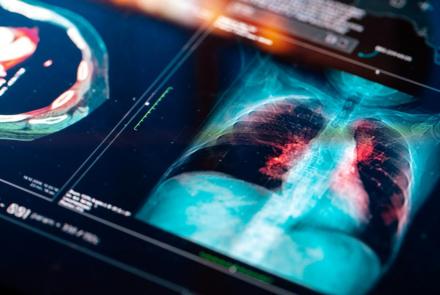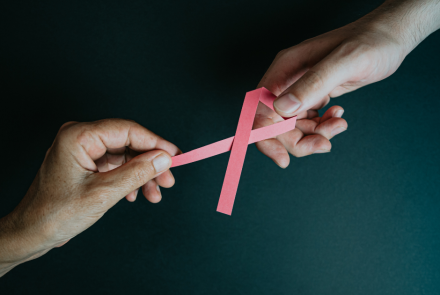For the almost one million people in the United States living with Parkinson’s disease, doctors have a range of treatments to offer, from medication to physical therapy to a pacemaker-like implant called deep brain stimulation. “While there is no cure for Parkinson’s today, scientists are conducting exciting research on new treatments that have the potential to make a big difference in the lives of people with Parkinson’s,” said Dr. Marc London, Neurologist at Highland Medical, P.C., and Chief of the Section of Neurology at Montefiore Nyack Hospital.
Parkinson’s disease is a chronic and progressive movement disorder. The cause of the disease is unknown. Parkinson’s involves the malfunction and death of nerve cells in the brain called neurons. Some of these dying neurons produce dopamine, a chemical that sends messages to the part of the brain controlling coordination and movement.
As the disease progresses, the amount of dopamine the brain produces decreases. This makes it more difficult to control movement. “Patients typically develop a tremor and a gait disorder, which is dangerous as it can cause falls,” Dr. London said. “Routine activities become harder, and everything takes much longer than it used to.”
Parkinson’s is more common in people over the age of 60, and is more often seen in men. The most common sign of Parkinson’s is a tremor in the hands when the limb is at rest. Other symptoms include slowness of movement, rigidity or stiffness of the limbs and trunk, and impaired balance and coordination. A person becomes more stooped, and their handwriting becomes smaller.
Diagnosing Parkinson’s
There is no blood test or imaging scan that can diagnose Parkinson’s. A doctor bases the diagnosis on a person’s symptom and a neurological exam. “The changes that take place in the brain are microscopic, so we don’t have any way of directly picking it up on a scan,” he explains. A doctor may order an MRI to exclude other conditions, such as a stroke, that could be causing the symptoms.
Treatment Options
While there is no cure for Parkinson’s, there are a variety of medications that can provide relief from symptoms. The most commonly prescribed medication is called Sinemet, which combines two medications—levodopa and carbidopa. Nerve cells use levodopa to make dopamine, and replenish the brain’s decreasing supply. Because it can cause nausea and vomiting, it is combined with carbidopa, which prevents these side effects.
Patients with advanced disease who take Sinemet may have involuntary movements, called dyskinesia. The doctor may prescribe long-acting amandatine (Gocovri or Osmolex) to treat these involuntary movements. Another drug, Xadago (safinamide) is also sometimes prescribed in conjunction with Sinemet to treat Parkinson’s symptoms.
Physical Therapy
People with the disease should engage in light exercise as much as they are able, to keep them mobile and more flexible, Dr. London advises. He recommends tai chi for promoting flexibility and balance. Physical therapy can also be helpful for a person with Parkinson’s. “As the disease progresses, a person may have difficulty with walking and balance, and falls can become a problem,” he says. “Physical therapy can help address these problems.”
A physical therapy program called LSVT Big can be helpful for people with Parkinson’s. The program originated from Lee Silverman Voice Treatment (LSVT—now called LSVT Loud), used to help people with speech disorders.
LSVT Big trains people with Parkinson’s to use their body more normally. The program teaches people how to improve their movement for activities ranging from small motor tasks like buttoning a shirt, to large motor tasks like getting up from a sofa or chair, or maintaining balance while walking. Research suggests the earlier a patient gets into the program, the more beneficial it can be.
Surgery
When medication is no longer able to control symptoms, surgery may be considered. One procedure called deep brain stimulation (DBS) involves implanting a pacemaker-like device in the brain to treats Parkinson’s movement disorders.
DBS does not stop Parkinson’s from progressing, and some problems may gradually return. While the motor function benefits of DBS can be substantial, it usually does not help with speech problems, “freezing,” posture or balance.
Research into New Treatments
A number of promising new treatments are being studied. These include:
- Stem cell therapy: The U.S. Food and Drug Administration recently approved the first clinical trial testing an investigational stem cell therapy aimed at restoring lost brain cells called neurons in people with advanced Parkinson’s disease.
- New medications: Current clinical trials are exploring disease-modifying therapies, which could potentially slow, stop or reverse the disease.
- Gene therapy: There are several gene therapy strategies currently being studied in clinical trials.
“Parkinson’s disease progresses differently for each person, and in many cases it evolves slowly,” Dr. London said. “While we are waiting for treatment that can stop the disease in its tracks, we have effective treatment that can help many patients.”






